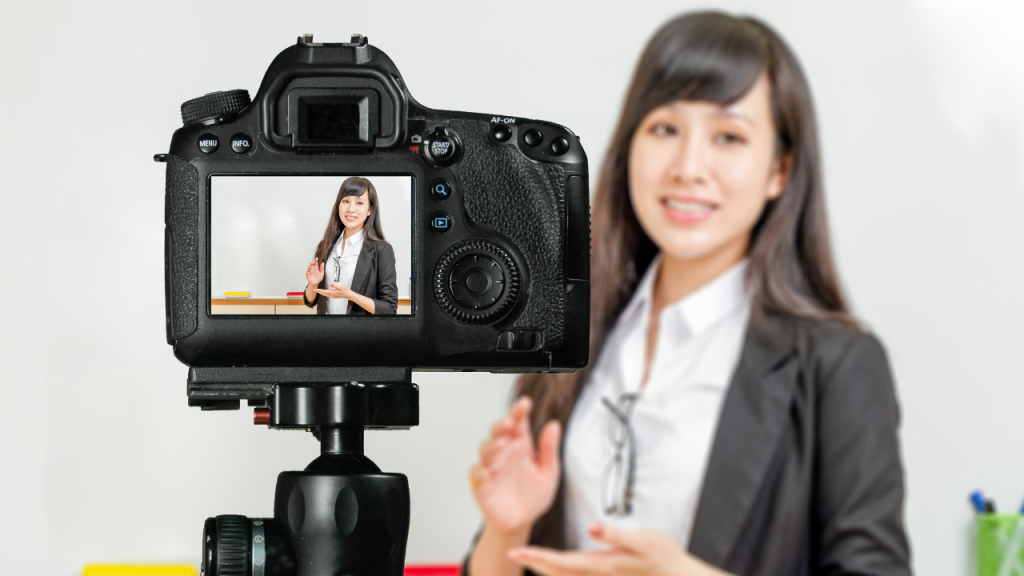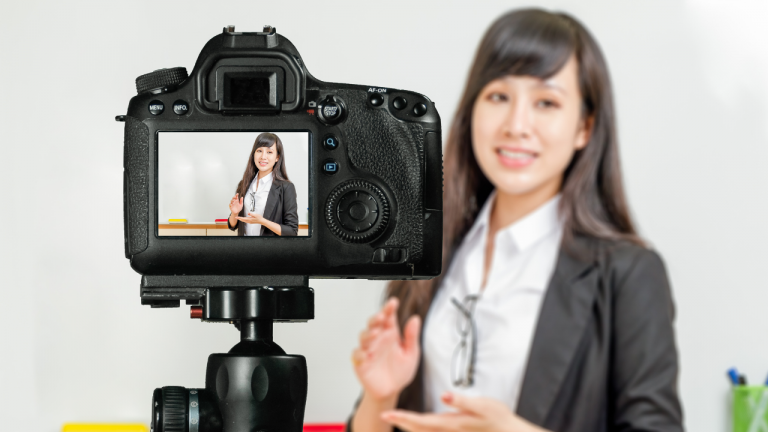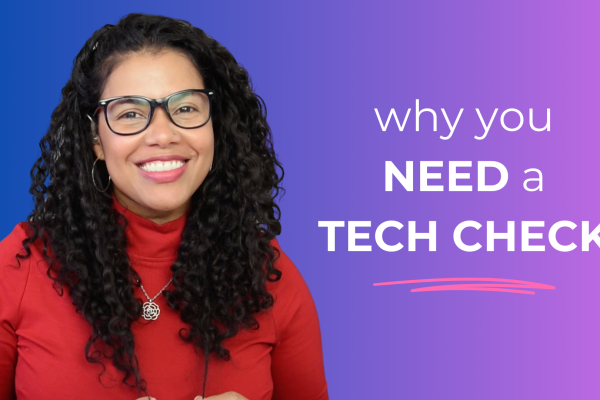With the onset of the COVID pandemic, most educators had to make the switch to remote learning, and we can’t say it went as smoothly as planned.

At first, this change seemed exciting for students. Indeed, who wouldn’t like listening to lectures from the comfort of their own home while also wearing sweatpants or even pajamas?
However, soon, we started seeing reports that students didn’t feel engaged, and some of them even wanted to give up school. The majority of students got tired of being confined at home, which raised concerns in the education community.
If you are an educator and you’ve noticed your students struggling with engagement, it’s high time to turn to technology. There are plenty of solutions, which you can use to diversify the course of the lesson and your interaction with students.
Want to learn some tips and tricks on engaging students with live video? Check out Mike Yates’ Leap Into Live Streaming session on Using Live Video to Connect With Students.
Live streaming is one of these solutions, and today we want to share a small guide with educators from all backgrounds on how to prepare for and hold a successful and engaging live streaming session.
In this post, we’ll cover:
- Tips on choosing the equipment that educators might need for a live stream
- Recommendations on preparing the live stream setup
- Advice on protecting your students’ safety during a live stream
Start by Getting Your Equipment Ready
It’s not a secret that you might need certain equipment to go live or create video content. But the good news is that you probably already have the basic stuff you need.

Which equipment is usually involved in live streaming?
- Camera (could be a webcam, DSLR, or mirrorless camera – or even a phone or iPad that you can connect into your computer to use as a video camera)
- Capture card (this connects your camera to your computer to use as a video camera)
- Microphone
- Tripod for the camera
- Lighting
- Live streaming software (also called an encoder)
The above list is everything you’d need to create a professional live stream broadcast. However, this list can also be really expensive depending on what specific items you purchase, so it’s important to remember that you can start live streaming with just your phone and your phone’s built-in camera and then “level” up as you get more proficient.
If you want to start a little higher up than just phone live streaming, we suggest focusing on these four items:
- A camera
- A microphone
- A light (a ring light can be as cheap as $15)
- A computer with live streaming software, like Ecamm Live
Do you need a live streaming solution?
If you’re planning to go live on different platforms, such as Facebook, YouTube, and Twitch, and you want to be able to do additional things like sharing your screen, adding graphics, rolling video clips, or bringing on guests, you’ll want to purchase live streaming software.
You can also consider starting an educational video podcast.
Usually, live streaming solutions have a broadcasting studio, which not only integrates with different streaming platforms, but also supports several cameras at once and even saves the recording of your live stream for later use, which is great if you need to send it out to students who weren’t able to make it live or repurpose your live videos into shorter clips to share in other ways.
So, if you plan to connect with students on different platforms through a live stream, such a solution is a must-have. But look for the one that lets you run a free trial first. For instance, at Ecamm, we offer our customers a 14-day free trial and a discount for educators, with no credit card required. You can check out our solution and decide whether it’s the one you need. No pressure.
Prepare Your Setup
Once you have all your equipment ready and rolling, you can go ahead and organize your space for a live stream.
This means that it’s time to prepare all the content that you will be using during your live stream and get all the tools, such as a whiteboard and a set of markers, ready for the lecture. Did you know you can create a virtual whiteboard using Ecamm Live? It’s pretty cool.
During a live stream, educators can also use a screen sharing option, which comes in handy if you want to demonstrate something on your computer, tablet, or smartphone.
For instance, if your lesson involves flashcards, you might need screen sharing to connect your students to a flashcard database, such as https://subjecto.com/flashcards/, so they could review the material together with you.
At this point, if you are planning to do screen sharing, it is important to remind you of running a trial test before going live. This will allow you to check whether screen sharing is working and if you can operate it properly.
Besides, giving your live stream a trial run allows you to check if all the devices are connected and working. So, take at least half an hour before the stream to prepare and check your setup.
Live Streaming and Privacy Concerns
Lastly, as we’ve covered all the basic aspects of live streaming, let’s discuss how you can protect yourself and your students during a live stream.
Which security measures can you take?
- Don’t use your real name on streaming platforms. For instance, Twitch warns against using a real name as a nickname. It’s a way to protect your identity, although it’s not always foolproof.
- Create a separate email account for streaming purposes. When signing up for a streaming platform, you will need to provide an email. If you don’t want a streaming platform to access your work email, it’s better to create a separate one.
- Work on account security. Set strong passwords (you can use a password generator for that purpose), turn on two-factor authentication – do everything to protect all the data you share during the live stream.
When you ensure security on your part, it also won’t hurt to remind your students about the privacy rules during the live stream, such as content sharing practices, location tagging, and other actions that can compromise your security. It’s very important to have such a conversation with your students, especially if your audience is young and uneducated about the threats of the online world.
If you’re concerned about privacy, you can always live stream into a closed Facebook group or an unlisted YouTube channel so that you’re able to curate and protect those who are watching.
Ask Your Students for Feedback!
One of the best parts of live streaming is that it’s really interactive and engaging. It’s a great opportunity for you to ask your students for feedback. After all, the goal of your live streams is to boost their engagement.
During your live broadcast, ask questions and tell viewers to leave comments on the video. If you’re using live streaming software like Ecamm Live, you can see the comments come into the software and can easily feature any comments or questions right on screen so that you don’t miss anything important from your students.
Bonus! Featuring student comments on screen is a fantastic way to make your students feel heard and seen.
Ask your students what they think about your setup, the quality of your stream, your equipment, and more. Students are quite tech-savvy these days, so they might also recommend some tools that you can involve in your future live streams. Besides, asking for feedback builds a rapport between you and your students, making them more involved in the process.
But, for your first live stream, make sure you have the most basic stuff ready – all the necessary equipment, the content, and the tools for your live stream.
Also, don’t forget to do a trial run to check if the video and the audio are in sync. And, when the live stream begins, do a quick talk with your students, reminding them of basic safety rules to make sure that nothing ruins this experience for them.
Are you an educator who is getting into live streaming?
Come join us in our Ecamm for Educators group and learn alongside other educators how you can step up your live streaming game and engage your students.
Want to get started? Email teachers@ecamm.com to learn more about our educational discount.
This article was written & contributed by Marques Coleman.

Marques Coleman is a blog writer and specializes in marketing and copywriting. Moreover, he is an avid traveler and always tries to learn something new.





